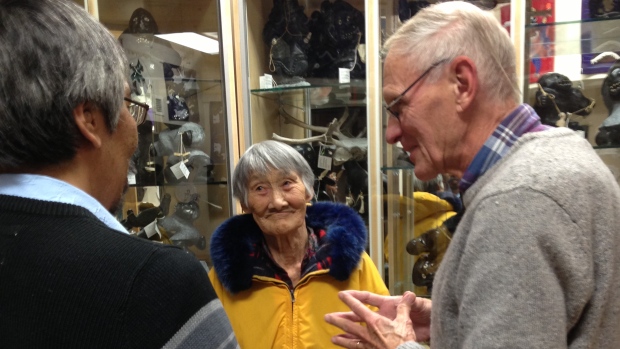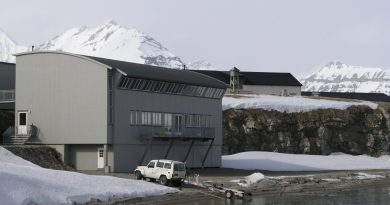Norway returns Inuit artifacts to Arctic Canadian community

People in Gjoa Haven, a community in Canada’s eastern Arctic territory of Nunavut, are celebrating the official opening of the Nattilik Heritage Centre today, the new home for a number of Inuit artifacts taken from the area by a Norwegian explorer in the last century.
Along with displays showing traditional Inuit living, as well as soapstone and ivory carvings, the centre houses items such as traditional oil lamps, harpoons and snow knives collected by Roald Amundsen in the early 1900s.
They were held for the last century at the Museum of Cultural History in Oslo, Norway.
Tom Svensson, a retired anthropologist from that museum, made the trip to Gjoa Haven to officially return some of those artifacts.
“They were chosen [to be returned] because they relate to hunting and household, they are readily transferable because they can stand climatic change and so on, and we have many of the same types so our collection is not in any way suffering in being reduced,” he said.
Tommy Tavalok, a Gjoa Haven elder, says he remembers such items marked graves, so they were easily taken.
“All the artifacts that were left in graves no longer exist, none in any graves are to be seen now,” he said. “But to be able to see them today gives me a warm feeling. We weren’t allowed to touch them and now they’re all gone, by tourists or other people who have taken them. It’s good to see them back in the centre.”
It took three years and $3 million to build the heritage centre.
Edward Stewart, the centre’s project manager, says in order to get the artifacts back to Nunavut, the museum had to meet certain criteria such as having a climate-controlled display case.
“It’s a buffered case, which means it’s got environmental control built in so it’s sealed from the outside environment,” he said.
“You set up a gel in the case to control relative humidity. We have to keep relative humidity at a steady level and at a high level so that the objects don’t dry out.”
An art gallery also has items for sale, such as wall hangings and tapestries made by local artists.
The ribbon-cutting at the new heritage centre begins at 2 p.m. local time today and tonight there will be a community feast, throat singing, drum dancing and square dancing.



